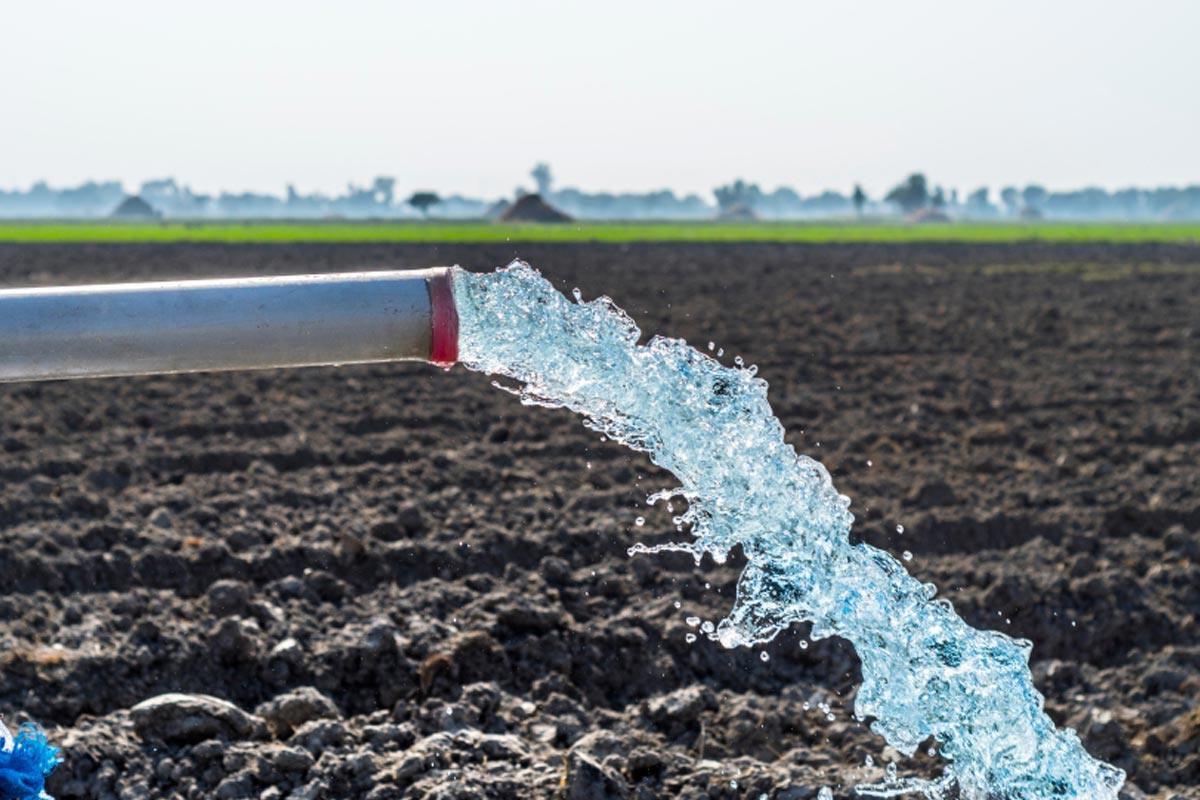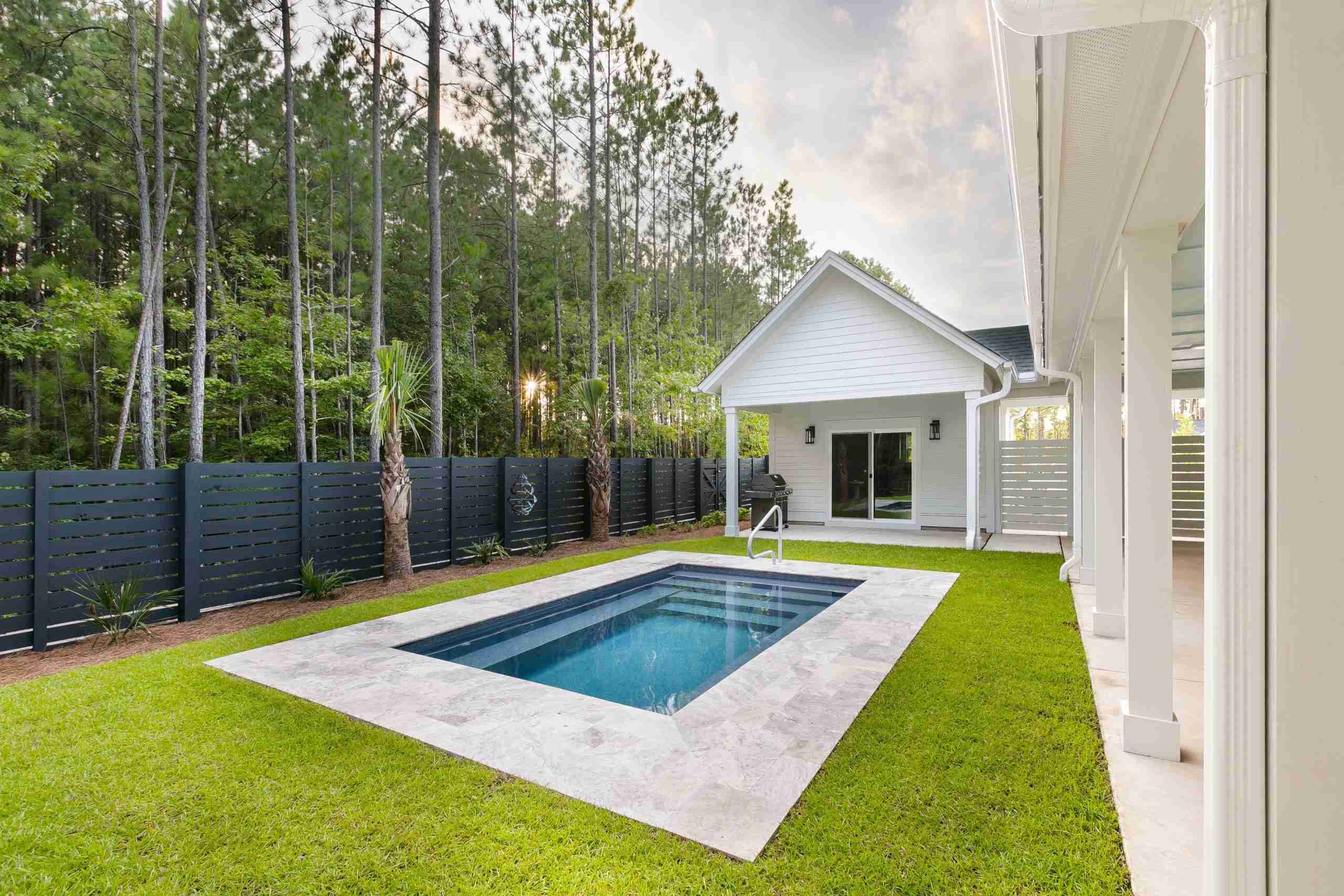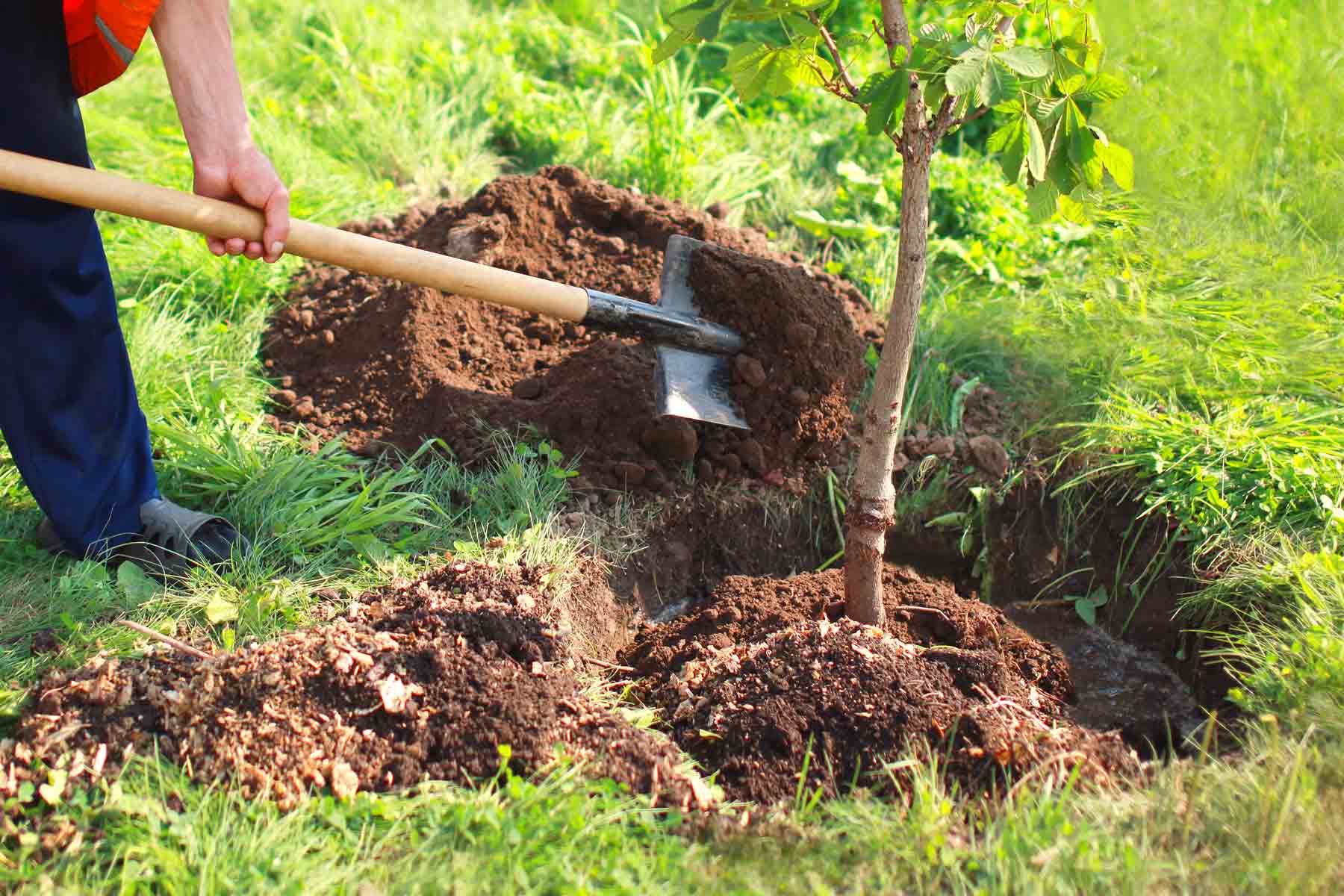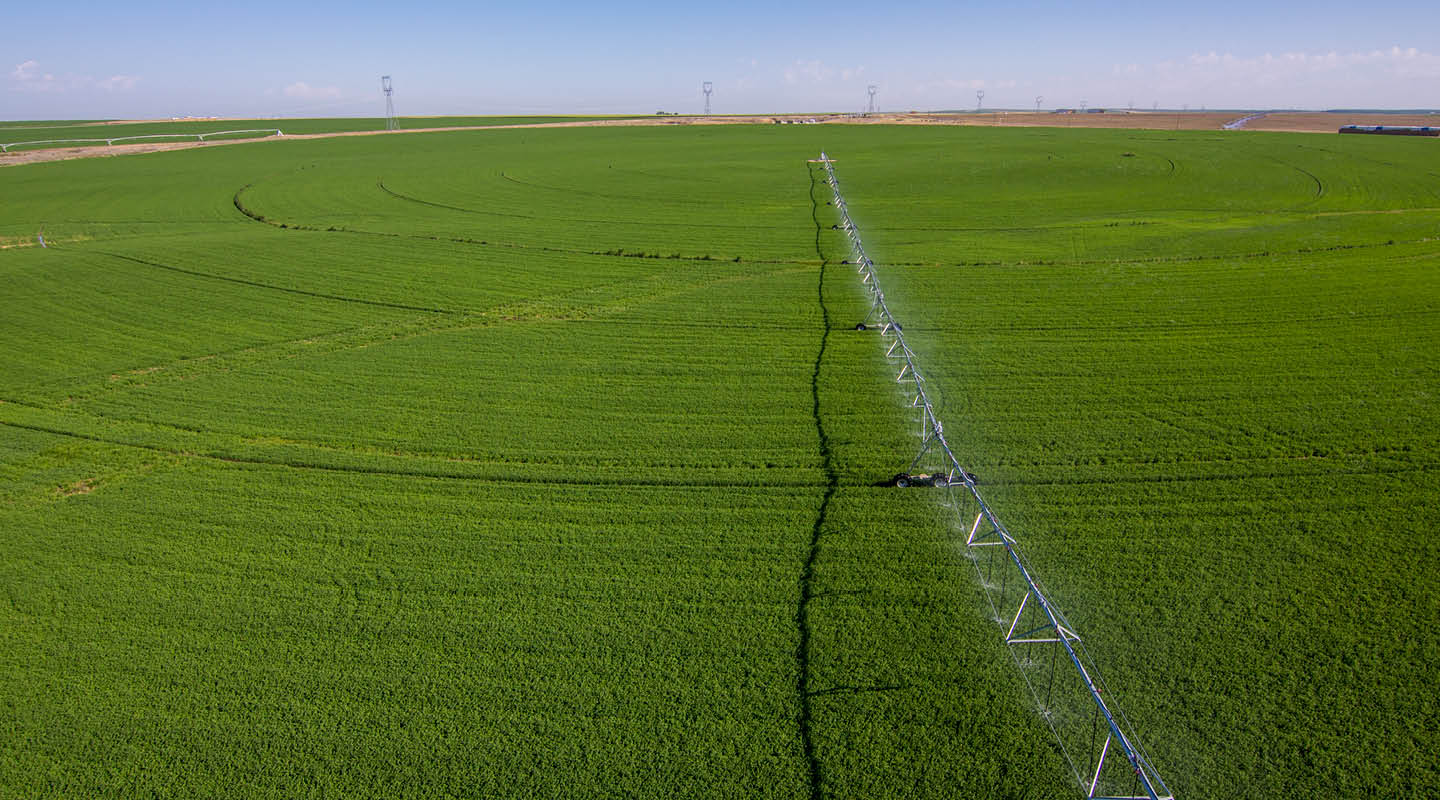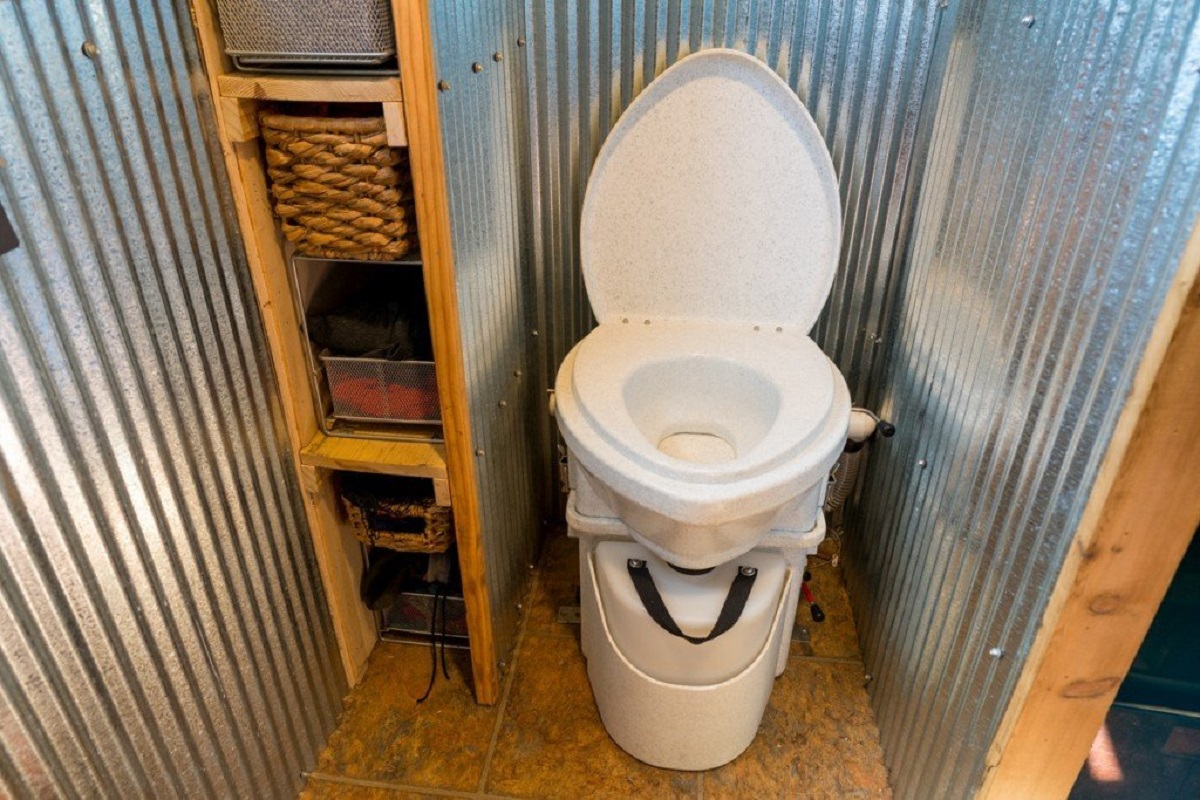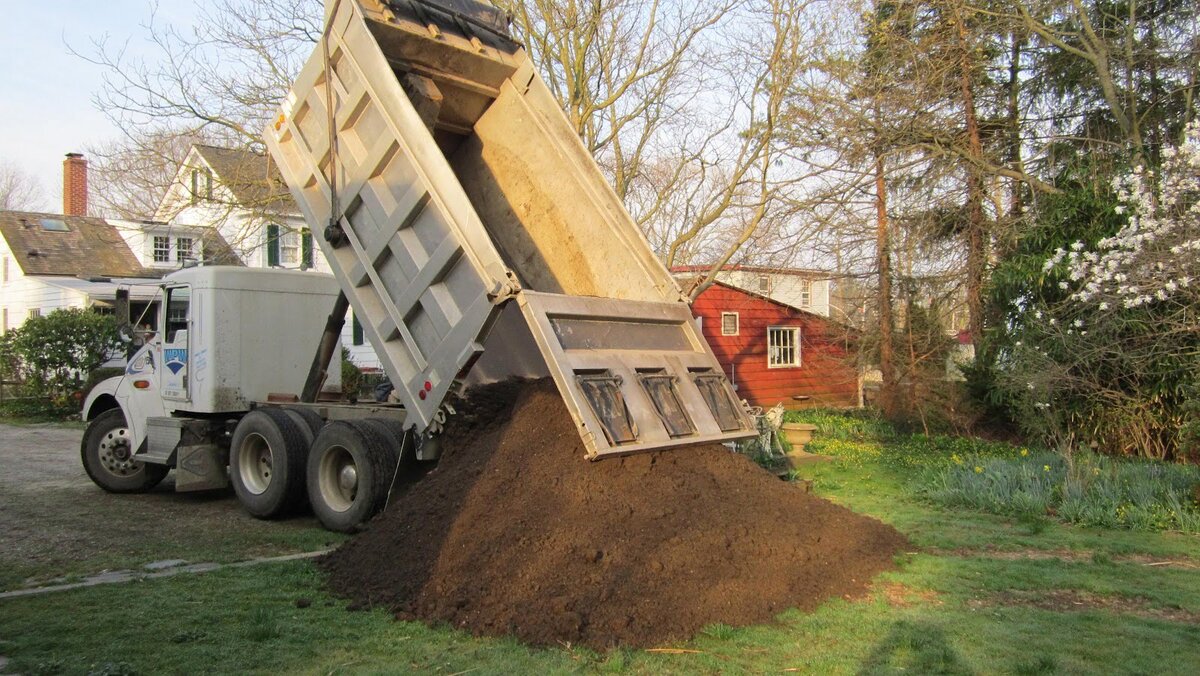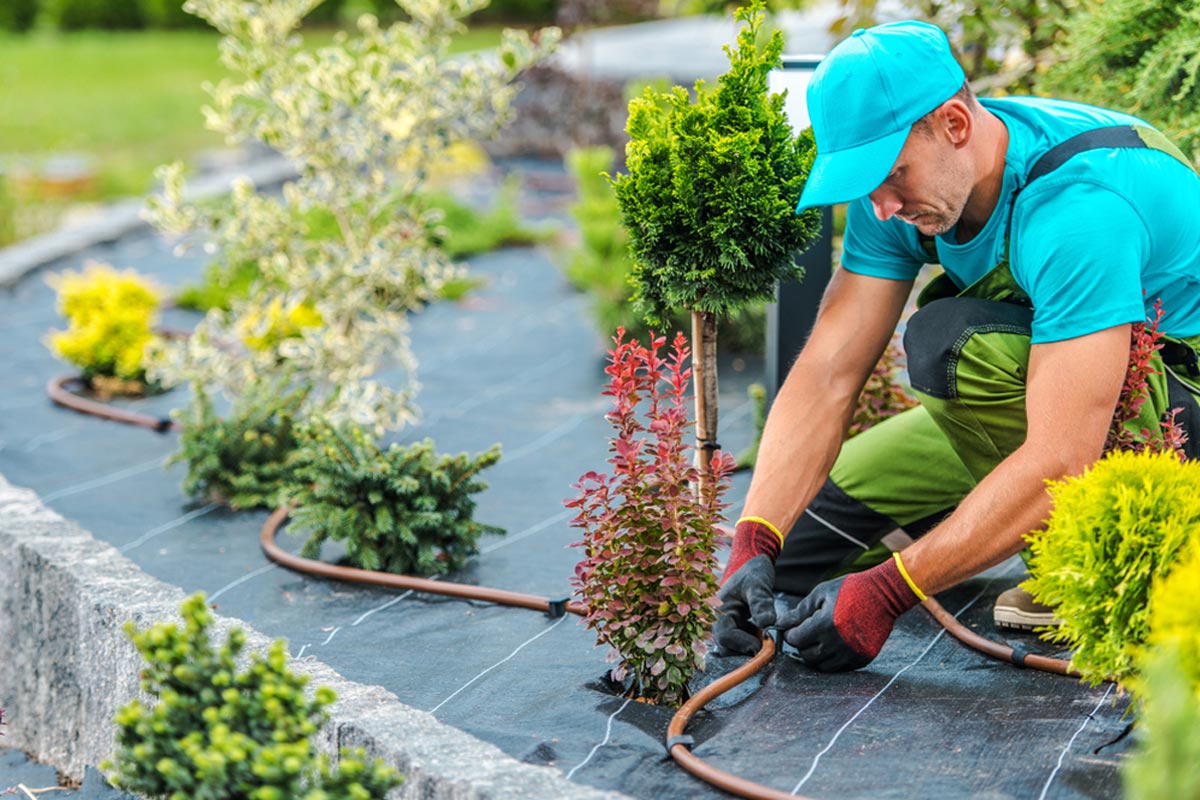Home>Gardening Techniques>DIY Projects>How Much Does It Cost To Level A Backyard
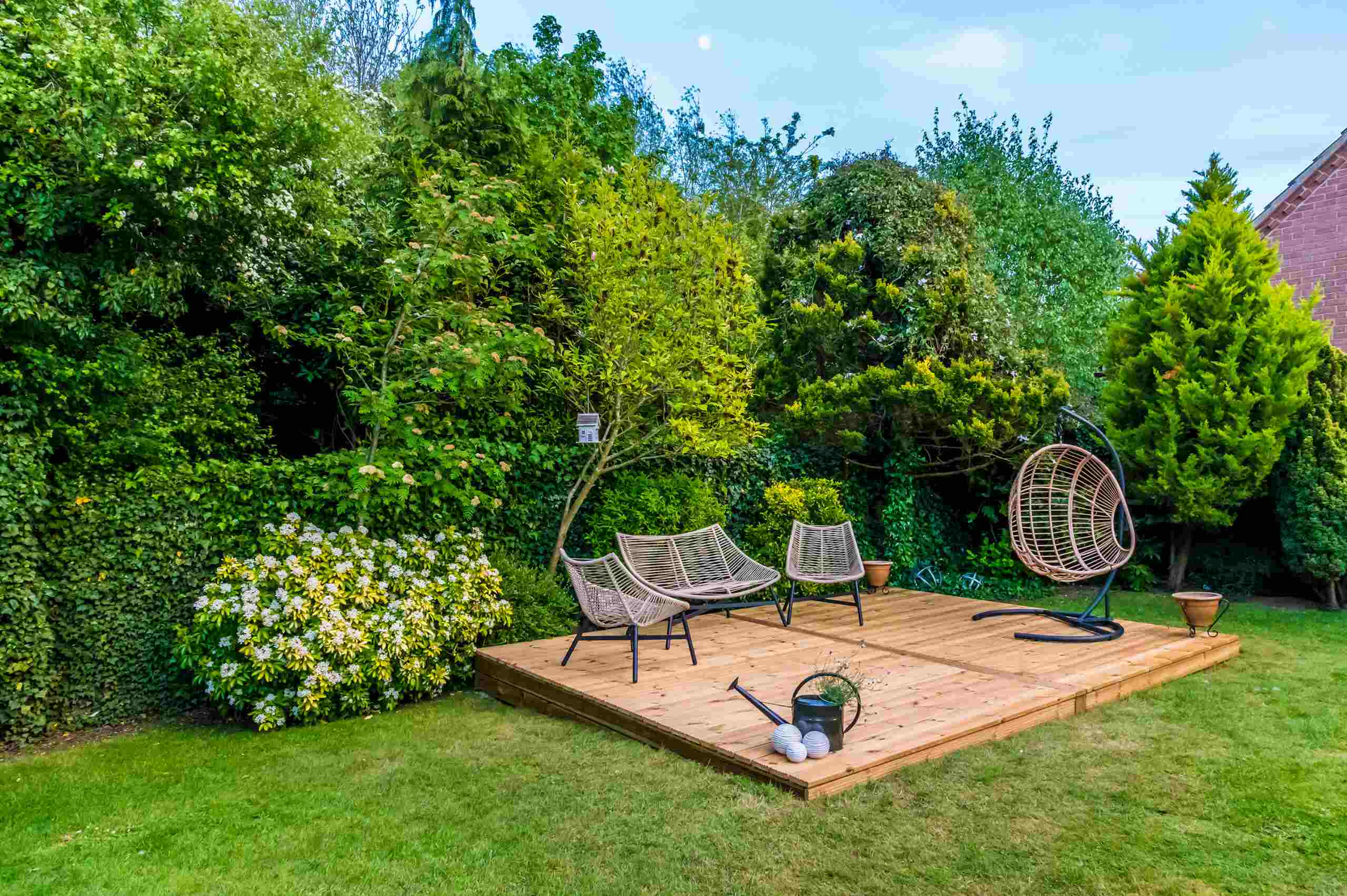

DIY Projects
How Much Does It Cost To Level A Backyard
Modified: August 29, 2023
Discover how much it costs to level a backyard with DIY projects. Get expert tips and budget-friendly solutions for transforming your outdoor space.
(Many of the links in this article redirect to a specific reviewed product. Your purchase of these products through affiliate links helps to generate commission for Chicagolandgardening.com, at no extra cost. Learn more)
Table of Contents
Introduction
Welcome to the world of DIY projects! If you’re looking to level your backyard, you’ve come to the right place. A leveled yard not only adds aesthetic appeal to your outdoor space but also provides a safe and functional area for various activities. Whether you want to create a level playing surface, build a patio, or lay down a new lawn, leveling your backyard is the first step towards achieving your outdoor dreams.
However, before you grab your shovel and start digging, it’s important to understand the factors involved in this project. From the cost of materials and labor expenses to equipment rental and permit requirements, there are several considerations to keep in mind. This article will guide you through the process and help you determine the cost of leveling your backyard.
By the end of this article, you’ll have a clearer understanding of the expenses involved in leveling your backyard, whether you choose to tackle the project yourself or hire professionals to assist you. So, let’s dive in and explore the factors that will determine how much it will cost to level your backyard!
Factors to Consider
Before embarking on your backyard leveling project, it’s important to take into account a few factors that can influence the overall cost. Understanding these factors will help you plan and budget accordingly. Here are the key factors to consider:
- Size of the Backyard: The size of your backyard will play a significant role in determining the cost of leveling. Larger yards will require more materials and labor, which can increase the overall expenses.
- Existing Terrain: The existing terrain of your backyard is another crucial factor. If your yard is relatively flat, the leveling process may be less complex and costly. However, if your yard has slopes, hills, or uneven areas, additional work will be required to achieve a level surface, potentially increasing the cost.
- Accessibility: The accessibility of your backyard is an important consideration. If there’s limited space for equipment and machinery to maneuver, it may require more time and effort to level the area, resulting in higher labor expenses.
- Drainage Issues: If your backyard has poor drainage or is prone to flooding, addressing these issues during the leveling process is crucial. Installing proper drainage systems or grading the land for better water flow may add to the overall cost.
- Type of Materials: The type of materials you choose for leveling your backyard will affect the cost. Whether you opt for soil, sand, gravel, or a combination of materials, each option will have different price points.
- Timeframe: The timeframe in which you want to complete the leveling project can impact the cost. If you’re in a rush and need the work done quickly, it may require additional manpower and resources, which can increase the overall expenses.
By considering these factors, you’ll have a better understanding of the specific requirements for your backyard leveling project and how they can influence the final cost. Let’s now move on to discussing the different expenses you may encounter along the way.
Cost of Materials
When determining the cost of leveling your backyard, one of the primary expenses will be the materials required for the project. The type and quantity of materials needed will depend on the size of your yard and the desired level outcome. Here are some common materials and their estimated costs:
- Topsoil: Topsoil is often used to adjust the grade and level the surface of the yard. The cost of topsoil varies depending on the quality and location, but it typically ranges from $15 to $50 per cubic yard.
- Fill Dirt: Fill dirt is ideal for raising the ground level in areas with depressions or low spots. The cost of fill dirt is generally lower than topsoil and can range from $10 to $25 per cubic yard.
- Sand: Sand is commonly used for leveling purposes, particularly in areas where drainage is a concern. The cost of sand varies depending on the type and quantity needed, but it typically ranges from $25 to $50 per ton.
- Gravel: Gravel can be used for leveling and creating a stable base for walkways or patios. The cost of gravel varies based on the type and quantity, but it generally ranges from $25 to $75 per ton.
- Sod or Grass Seed: If you plan to lay down a new lawn, the cost of sod or grass seed should be considered. The price of sod can vary depending on the type and region, but on average, it ranges from $0.30 to $0.90 per square foot. Grass seed can be more cost-effective, with prices ranging from $0.05 to $0.40 per square foot.
Keep in mind that these cost estimates are rough averages and can vary depending on your location, vendor, and specific project requirements. Don’t forget to factor in delivery fees if applicable, as some materials may need to be transported to your property.
Next, we’ll explore the labor expenses involved in leveling your backyard and how they contribute to the overall cost of the project.
Labor Expenses
Leveling a backyard typically requires a significant amount of manual labor, especially if the terrain is uneven or there are existing features that need to be removed. Labor expenses can vary based on several factors, including the complexity of the project, the size of the yard, and the level of skill required. Here are a few factors that can influence the labor costs:
- Scope of Work: The extent of the leveling project will impact the labor expenses. If it involves extensive excavation, removing debris, or tackling multiple obstacles, it may require more time and effort, thus increasing the cost.
- Hourly Rates: Labor rates can vary depending on the location and the experience of the workers. Rates typically range from $20 to $50 per hour, with specialized trades or contractors charging higher prices.
- Number of Workers: The number of workers needed can affect the labor expenses. Depending on the project’s complexity and timeline, more workers may be required, resulting in higher costs.
- Equipment: If heavy machinery or specialized equipment is necessary for the leveling process, additional labor expenses may be incurred. Equipment operators or rental fees will contribute to the overall cost.
It’s important to note that labor expenses can also depend on whether you choose to hire a professional contractor or do the work yourself with the help of friends or family. Hiring professionals may increase the labor costs, but it often ensures a higher level of expertise and efficiency. On the other hand, taking the DIY approach can help save money on labor but may require more time and effort on your part.
Now that we’ve covered the materials and labor expenses, let’s move on to discuss equipment rental and permit costs, two additional factors that can contribute to the overall cost of leveling your backyard.
Equipment Rental
Leveling a backyard often requires the use of various tools and equipment to complete the project efficiently. While you may already own some basic tools, larger machinery and specialized equipment may need to be rented. The cost of equipment rental can significantly impact the overall expenses of your backyard leveling project. Here are some common equipment rentals and their estimated costs:
- Excavator: An excavator is a versatile machine that can be used for digging, moving soil, and leveling larger areas. The rental cost for an excavator can range from $150 to $500 per day, depending on the size and model.
- Skid-Steer Loader: This compact machine is useful for moving heavy materials, grading, and leveling. Rental prices for skid-steer loaders typically range from $150 to $300 per day.
- Bobcat: A bobcat is another popular choice for backyard leveling projects. It can handle various tasks such as excavation, grading, and pushing materials. The rental cost for a bobcat can range from $100 to $300 per day.
- Compactor: A compactor is essential for compacting the soil or gravel to create a stable base. The rental cost for a compactor can range from $50 to $100 per day.
- Hand Tools: Depending on the specifics of your project, you may need to rent or purchase additional hand tools such as shovels, rakes, wheelbarrows, and levels. The rental cost for hand tools varies, but it is usually more cost-effective compared to larger machinery.
It’s important to consider the rental duration when calculating the equipment costs. If your project requires multiple days or weeks to complete, renting the equipment on a weekly or monthly basis can offer cost savings compared to daily rentals.
Don’t forget to inquire about any additional fees associated with equipment rental, such as delivery and pick-up charges or damage waivers. It’s also essential to understand the usage requirements and safety precautions for each piece of equipment to avoid any unnecessary costs or accidents.
Now, let’s move on to the next factor that can impact the cost of leveling your backyard: permit costs.
Permit Costs
Before starting your backyard leveling project, it’s crucial to check if you need any permits or approvals from your local municipality or homeowner’s association. Permit requirements vary depending on your location and the extent of the work being done. Failing to obtain the necessary permits can result in legal consequences and potential additional expenses. Here are some factors to consider when it comes to permit costs:
- Permit Fees: Most municipalities charge a fee for permit applications. The cost can vary significantly, ranging from $50 to several hundred dollars. Make sure to check with your local building department to determine the specific permit fees for your project.
- Inspections: Some permits may require inspections at various stages of the project to ensure compliance with local building codes. The cost of inspections, if applicable, should be factored into your budget. Inspections typically range from $50 to $200 per visit.
- Additional Requirements: Depending on your location and the nature of your project, there may be additional requirements such as submitting plans, providing documentation, or obtaining permits for temporary structures like scaffolding or fencing. These requirements may have associated costs as well.
- Homeowner’s Association (HOA) Approval: If you live in a community with a homeowner’s association, it’s essential to check if their approval is required for making changes to your backyard. Some HOAs have specific guidelines and architectural review processes, which may involve fees or additional paperwork.
It’s important to allocate time and resources for obtaining the necessary permits and approvals before starting your backyard leveling project. Failure to do so can result in project delays, fines, or even being required to undo the work that has been done.
Remember to check with your local authorities and homeowner’s association for any specific regulations or permit requirements that may apply to your area. Being proactive in securing the necessary permits will help ensure a smooth and hassle-free project experience.
Now that we’ve covered the various expenses involved in leveling your backyard, let’s move on to discussing the pros and cons of DIY vs. hiring professionals for this project.
Other Expenses
In addition to the materials, labor, equipment rental, and permit costs, there may be other expenses that you need to factor into your budget when leveling your backyard. These expenses can vary depending on the specifics of your project and any additional features or improvements you plan to make. Here are some common other expenses to consider:
- Debris Removal: If your backyard leveling project involves excavation or removing existing structures, you may need to hire a waste removal service or rent a dumpster to dispose of the debris. The cost of debris removal can range from $100 to $500, depending on the amount and type of waste.
- Landscaping: Once the leveling is complete, you may want to enhance the aesthetics of your backyard by adding landscaping elements such as plants, trees, or decorative features. The cost of landscaping can vary widely based on your preferences, the size of your yard, and the plants you choose. It’s recommended to set aside a portion of your budget for landscaping expenses.
- Irrigation System: If you’re planning to install or upgrade an irrigation system for your lawn or garden, this cost should be considered as well. Depending on the size of your yard and the complexity of the system, the cost can range from a few hundred dollars to several thousand dollars.
- Lighting: Incorporating lighting into your backyard can enhance its usability and ambiance. Whether you want to install pathway lights, accent lights, or patio lighting, setting aside a budget for lighting expenses is essential. The cost will depend on the type and quantity of lights you choose.
- Hardscaping: If you plan to add hardscape elements such as a patio, walkway, or retaining wall, these expenses should be factored into your budget as well. The cost of hardscaping will depend on the materials used, the size and complexity of the project, and any specialized features you want to incorporate.
It’s important to carefully consider these other expenses and prioritize them based on your budget and overall goals for your backyard. It’s recommended to create a detailed plan and estimate for each aspect of your project to avoid any surprises or financial strain along the way.
Now that we have covered the various expenses involved in leveling your backyard, let’s move on to discussing the pros and cons of DIY versus hiring professionals for this project.
DIY vs Hiring Professionals
When it comes to leveling your backyard, you have the option to either tackle the project yourself or hire professionals to handle the job. Both approaches have their advantages and considerations. Let’s explore the pros and cons of DIY versus hiring professionals:
DIY:
- Cost Savings: Undertaking the project yourself can save you money on labor costs. You have control over purchasing materials and renting equipment, potentially lowering expenses.
- Flexibility and Customization: DIY allows you to have complete control over the process. You can work at your own pace, make adjustments along the way, and incorporate your unique vision and ideas.
- Learning Experience: Doing the project yourself provides an opportunity to learn new skills and gain hands-on experience. It can be a fulfilling and educational experience.
- Time and Effort: DIY projects require a significant amount of time and physical effort. You should be prepared for the challenge and have the necessary tools, skills, and dedication to complete the project.
Hiring Professionals:
- Expertise and Efficiency: Professionals possess the knowledge, experience, and specialized tools to efficiently and accurately level your backyard. They can ensure a high-quality result and save you time and effort.
- Reduced Risks: Professionals understand the potential challenges and risks involved in leveling a backyard and can handle them effectively. They are trained in safety measures and can avoid costly mistakes.
- Saves Time: Hiring professionals allows you to focus on other tasks or responsibilities while they handle the project. It can expedite the process and ensure that the job is completed within a specified timeframe.
- Cost Considerations: While hiring professionals may incur additional labor costs, it can potentially save you money in the long run by avoiding mistakes, rework, or the need for costly repairs in the future.
Deciding whether to take the DIY approach or hire professionals depends on various factors such as your budget, time availability, skill level, and the complexity of the project. It’s important to assess your capabilities and resources before making a decision.
If you choose to hire professionals, do thorough research, and seek recommendations to ensure they have the necessary expertise and a good track record. Obtain multiple quotes and clearly communicate your expectations to ensure a successful partnership.
Now that we’ve explored the pros and cons of DIY versus hiring professionals, you can make an informed decision based on your specific circumstances and goals for your backyard leveling project.
Conclusion
Leveling your backyard can transform it into a functional and appealing space for various activities. By considering factors such as the size of your yard, existing terrain, accessibility, drainage, and materials, you can estimate the costs involved in this project. From the cost of materials, labor expenses, equipment rental, permit costs, and other expenses, it’s important to create a comprehensive budget to ensure the smooth execution of the project.
Whether you choose to take the DIY approach or hire professionals, there are pros and cons to consider. DIY allows for cost savings, customization, and a valuable learning experience but requires substantial time, effort, and skills. On the other hand, hiring professionals offers expertise, efficiency, reduced risks, and time savings, but comes with additional labor costs.
Remember to check if any permits or approvals are required from your local municipality or homeowner’s association, as failing to do so can result in legal consequences and unexpected expenses.
By carefully planning, considering your budget, and understanding the specific requirements of your backyard leveling project, you can successfully transform your outdoor space into a leveled, beautiful oasis.
Now, armed with this knowledge, it’s time to get started on your backyard leveling project. Whether you choose to embark on the DIY adventure or enlist the help of professionals, may your journey be filled with creativity, satisfaction, and a backyard that brings you joy for years to come.
